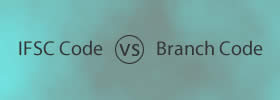Difference between Syllabus and Syllabi
Key difference: Essentially, a syllabus is a descriptive outline and summary of topics that are to be covered in an education or training course. The syllabus will usually provide specific information about the said training course and is often drafted by the governing body or by the instructor of the course. Syllabi are the plural form of a syllabus.
Essentially, a syllabus is a descriptive outline and summary of topics that are to be covered in an education or training course. The syllabus will usually provide specific information about the said training course and is often drafted by the governing body or by the instructor of the course. Syllabi, on the other hand, are the plural form of a syllabus.
According to Dictionary.com, a syllabus is:
- An outline or other brief statement of the main points of a discourse, the subjects of a course of lectures, the contents of a curriculum, etc.
- A short summary of the legal basis of a court's decision appearing at the beginning of a reported case.
- A book containing summaries of the leading cases in a legal field, used especially by students.

A typical syllabus will contain information on how, where and when to contact the lecturer and teaching assistants; an outline of what will be covered in the course; a schedule of test dates and the due dates for assignments; the grading policy for the course; specific classroom rules; etc.
The purpose of a syllabus is to ensure consistency between courses thought at different colleges under the same governing body. A syllabus issued by the governing body, i.e. the board of education, the head of department, etc, may be modified by the instructor as long as it is consistent with the curriculum.
The syllabus also serves as a means for the students to be aware and understanding what they will be thought in the duration of the course. Wikipedia lists the various purposes served by a syllabus:
- fair and impartial understanding between the instructor and students such that there is minimal confusion on policies relating to the course
- setting clear expectations of material to be learned
- setting clear expectations of behavior in the classroom
- setting clear expectations of effort on student's behalf to be put into the course
- providing a roadmap of course organization/direction relaying the instructor's teaching philosophy to the students
- providing a marketing angle of the course such that students may choose early in the course whether the subject material is attractive
- clarifying student understanding of specified material such as grading policy, grading rubric, late work policy, locations and times
- providing contact information for instructor and teaching assistant such as phone or email
- listing materials required and/or recommended such as textbooks, assigned reading books, calculators, lab vouchers, or other equipments
- listing outside resources for subject material assistance, including extracurricular books, tutor locations, resource centers, etc.
- important dates in course such as exams and paper due-dates
- tips for succeeding in mastering course content such as study habits and expected time allotment
- suggested problems if applicable
- necessary pre-requisites or co-requisites to current course
- safety rules if appropriate
- objectives of the course
Types of syllabus include:
- Notional-Functional syllabus
- Grammatical syllabus
- Lexical syllabus
- Situational syllabus
- Text-based syllabus
- Skill-based syllabus
- Task-based syllabus
- Learner-generated syllabus
- Mixed syllabus
- Online course syllabus
Image Courtesy: myengg.com









Add new comment